Natural Bridge Zoo hearing date set, search warrant paints "cruel" picture
- Oops!Something went wrong.Please try again later.
This story is part of our ongoing coverage of The Natural Bridge Zoo's legal problems starting with a Dec. 6, 2023 search warrant. To catch up from the beginning, click here.
LEXINGTON – A court date has been set for Karl and Debbie Mogensen, owners of the Natural Bridge Zoo, after the zoo was investigated by the Office of the Attorney General (OAG) and Virginia State Police on Dec. 6.
Two notices were filed in the Lexington/Rockbridge General District Court. Both summon the Mogensens to the court on Dec. 20 in order to address “cruel treatment” and “neglect” of animals at the zoo. The warrants were issued for a search in regard to a number of potential charges, such as animal cruelty, but the court clerk did not have any criminal charges for the Mogensens on file as of Tuesday morning, Dec. 12.
The first notice explains 95 animals were “seized from their owner on Dec. 6.”
The 95 “impounded” animals include: 12 white-faced capuchin (monkeys), four brown-faced capuchin, two red ruffed lemur, three black and white ruffed lemur, six cotton top tamarin (monkeys), two gibbon (monkeys), two sacred ibis (birds), three ground hornbills (birds), one kookaburra (birds), 15 macaws, four amazon parrots, two pink gray cockatoos, one sulfer-crested cockatoo, one serval (an African wildcat), two Burmese pythons, two ball pythons, five red-eared sliders (turtles), one painted turtle, one skink, 14 tortoises, one mini donkey, one donkey, one sheep, two llama, and one Kuvasz dog.
The second listed five animals — four giraffes and Asha the elephant — that were not impounded but would also be considered during the Dec. 20 hearing. However, all instances of Asha were struck from the document. Officials with the OAG did not confirm if Asha had been impounded or not.
The warrant also called for police to seize animals who have passed on, such as “one euthanized white bengal tiger.” The deceased animals include seven serval, one Kuvasz dog, one llama, five cranes, one de brazza monkey, one alligator, one red-ruffed lemur, one guenon (monkey), one mandrill, one grey-crowned crane, two ground hornbills, one white-faced capuchin, one green-winged macaw, one sitatunga, one gibbon, one Burmese python.
There is also a list of animal remains to find — one “giraffe cape skin,” legs of zebra, one giraffe head, one mandrill head, one bongo pelt, two giraffe tails, one zebra pelt, three giraffe legs, and “three specimen jars labeled ‘Asha.’”
The documents originally state the hearing would occur on Dec. 15, but each instance was struck through and replaced with Dec. 20.
A warrant for the Dec. 6 search was approved on Dec. 4 in the Rockbridge County Circuit Court. Much of the warrant application was written by Sgt. Christine Boczar, a certified animal cruelty investigator with 16 years of law enforcement experience. According to the Powhatan Sheriff’s Office’s social media, Boczar received an award from the Attorney General's Office in May for her work in an investigation that resulted in “the rescue of thousands (yes thousands) of beagles from a facility” [sic] in Cumberland County.
According to the search warrant documents, the investigation began when a confidential informant began to speak with police.
What the informants saw happen to Asha
The informant began working at the zoo in March, hired as a “farmhand/groundskeeper.” Throughout their time at the zoo, the informant recorded and documented conversations with “other employees, management, and owners in writing and video." Much of the warrant focuses on elephant keeper Mark Easley.
According to the warrant, Asha the African elephant would wake up in the morning in a barn with two large cracks in the wall. She was chained inside. On May 8, Easley told the informant Asha is “standing and sleeping in her own urine.”
“[The informant] documented smeared excrement and urine puddled on the mat covering the concrete floor,” reads the warrant. “Due to the buckling of the mat, urine and water rest on the mat as it prevents the liquids from properly running into the floor drain. In one of the videos where they are in the elephant barn, Easley says ‘see how the water's just standing? That's urine.’ Due to Asha being housed in shackles, she is not able to freely move out of her own waste.”
He also allegedly gave Asha cold baths because he does not want to “baby them too much.” The baths were necessary for Asha to fulfill one of her jobs — giving rides.
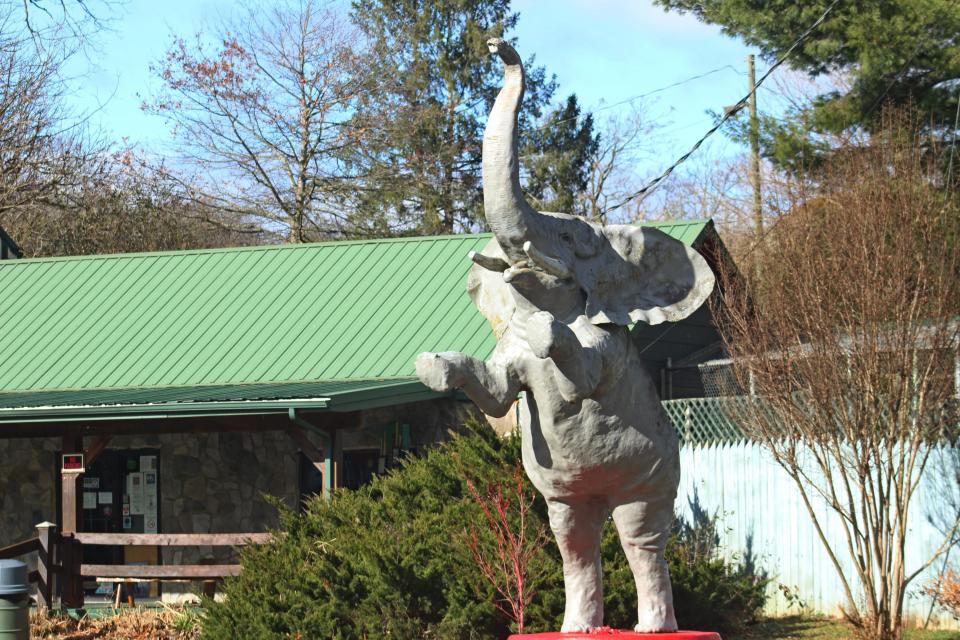
A sign near the zoo notes that the rides have a weight limit of 250 pounds, but the informant reported regularly seeing two adults and a child riding Asha at a time.
This would allegedly go on for hours at a time. On June 3, the informant was told she carried 166 guests and on June 4, they were told Asha carried 191 guests. The rides were offered “typically three to four days a week during the spring and summer season from noon to 3 p.m.”
In October, a second confidential informant and Bozcar paid admission to enter the zoo and saw Asha in an open area, the only water “outside of the fenced area, requiring her to reach over/through a hotwire fence to drink.” A hotwire fence contains an electrical charge and shocks those that touch it.
“Asha, who has lived as a solitary elephant for decades, has very little enrichment,” the warrant reads. “Asha sways and rocks from side to side in order to soothe herself and relieve boredom and stress. On several dates, she was seen swaying and rocking for up to an hour at a time. Asha often tries to create mud holes by digging in the dirt and adding water from her trough, but each time she attempted this natural behavior, the zoo filled in the holes as it was important to them that she be clean so the public could ride her.”
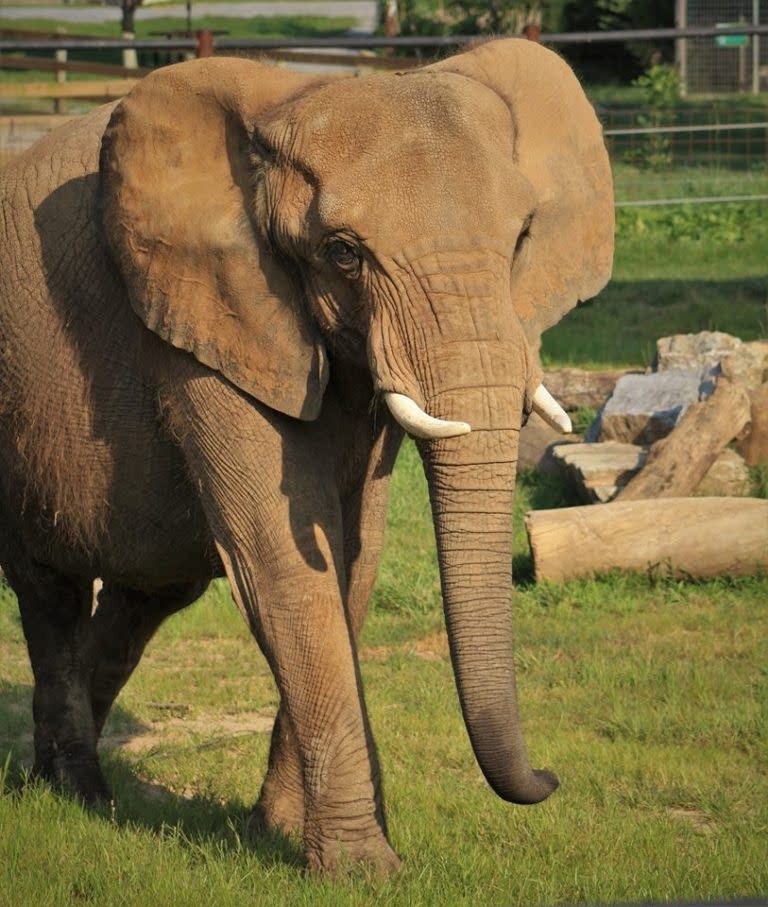
Boczar reports seeing “marks visible on Asha's skin [that] matched the riding harness and straps that she had on during elephant rides” in October.
More direct abuse was also allegedly witnessed by the first informant. Easley, who has worked at the zoo for over 15 years, carries a bullhook, a “pole with a metal hook and metal tip used in training and controlling elephants by applying pressure to sensitive points on an elephant’s body,” according to the warrant.
“[The informant] saw [Easley] jab Asha in her right forefoot two times with the pointed end of a bullhook with enough force to get a reaction from Asha,” the warrant reads. “When he did this, she immediately lifted her right foot, and shifted where she was standing. This jabbing happened during the time elephant rides were available, but no guests were nearby, and at the time [Easley] was sitting in a chair and Asha was standing at the loading platform. I asked [Easley] why he 'poked' Asha in her foot 'the other day, and he told me that she was 'spitting in [his] direction.' During our conversation [Easley] told Asha move up, and then swung the hooked end of a bullhook against her left hind limb, after which she moved forwards.”
Over the course of several months, Easley allegedly explained his reasoning to the informant, saying “it is about authority. I'm not her friend, I'm her boss, and you gain respect through fear.” He allegedly felt his role was to gain “keeper respect” from the park animals. In order to get this with Asha, Easley advised the bullhook “always” be used where “bone is close to flesh. Make it count.”
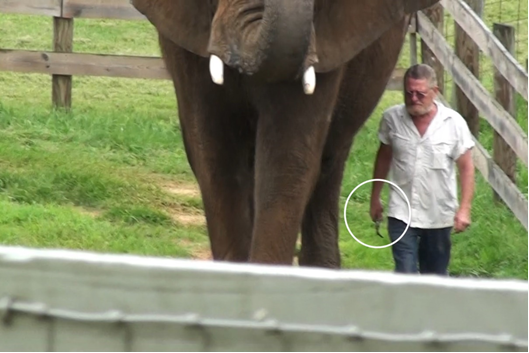
Asha was not the only reason for the search
Bozcar visited the zoo twice, once with the second confidential informant on Oct. 25 and alone on Nov. 4.
“The most alarming issue was a deceased goat in the African Pygmy Goat exhibit,” the warrant reads. “This deceased goat remained there for over an hour unnoticed by staff and by the time we left was bloated and stiff. Your affiant did contact local law enforcement and report the deceased animal.”
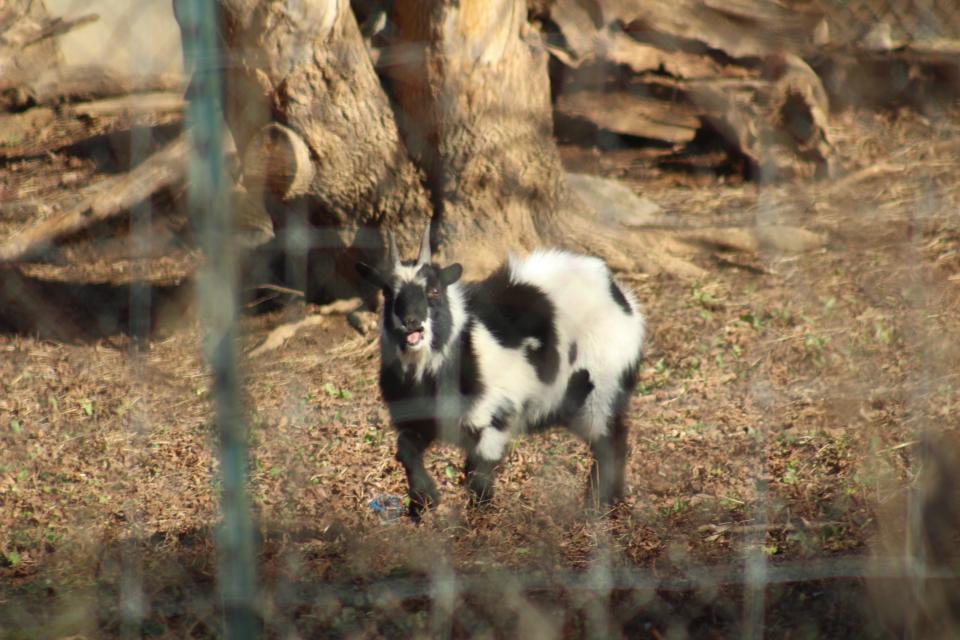
A white bengal tiger has “very cracked and uneven” paw pads during the second visit. After the Dec. 6 raid, Victoria LaCivita, a spokesperson for the office of the attorney general, confirmed in an email with The News Leader that the park’s tiger had been “humanely” euthanized with consent of the owners upon recommendation of a veterinarian. The tiger, known as Zeus, is the subject of reporting by Robert Locklear with WSET.
Bozcar also allegedly witnessed:
One giraffe had overgrown hooves, and none had enrichment in the enclosure to give them physical or mental stimulation. On the second visit, the giraffes did not have water, the hooves had not been attended to, they were not provided any enrichment, and “an overwhelming foul odor was coming from inside their barn.”
“A female zebra appeared to have a medical issue with her rear hoof/leg. This zebra was provided medications by staff at the direction of management and the owner Debbie. One of these medications was expired and prescribed for another animal.”
Unclean living spaces for the animals were also visible, such as “dirty” water for the black swans and American alligators. The Burmese python exhibit contained leftover shed skin and rings on the inside of the water feature, a physical record of the water disappearing over time.
One tufted capuchin monkey was on display with significant hair loss in October. There were two in November.
The African Crested Porcupine's shelter was blocked “causing the porcupine to pace back and forth walking into the bars trying to access its enclosure.” In November, the porcupine was, “again, pacing and walking into the bars trying to get into the closed off enclosure.”
“A Sacred Ibis had a severely unaligned beak, which did not allow him to eat naturally. This Sacred Ibis also appeared to be much smaller than the others in the habitat.”
“There were a large number of electric cords coming from boxes inside the capuchin [monkey] habitat that were plugged into other cords secured with electrical tape that appeared to be hazardous.”
“The Fallow Deer were fighting each other as food was fed to them by visitors through a tubed system.”
Many animals were without water, including the eurasian lynx, dromedary camel, the rheas, cape barron goose, and the guinea birds.
These findings led to the Dec. 6 raid on the Natural Bridge Zoo.
“Based on our first-hand investigation . . . we believe there to be a direct and immediate threat to the health and safety of the animals belonging to and residing at Natural Bridge Zoo,” the warrant reads. “There are a number of animals with a lack of food and /or water, unclean or unsuitable environments, a lack of veterinary care, a lack of enrichment, and suffering from ill-treatment. All of this and a deceased animal (goat) left for hours unnoticed by staff supports our request for intervention.”
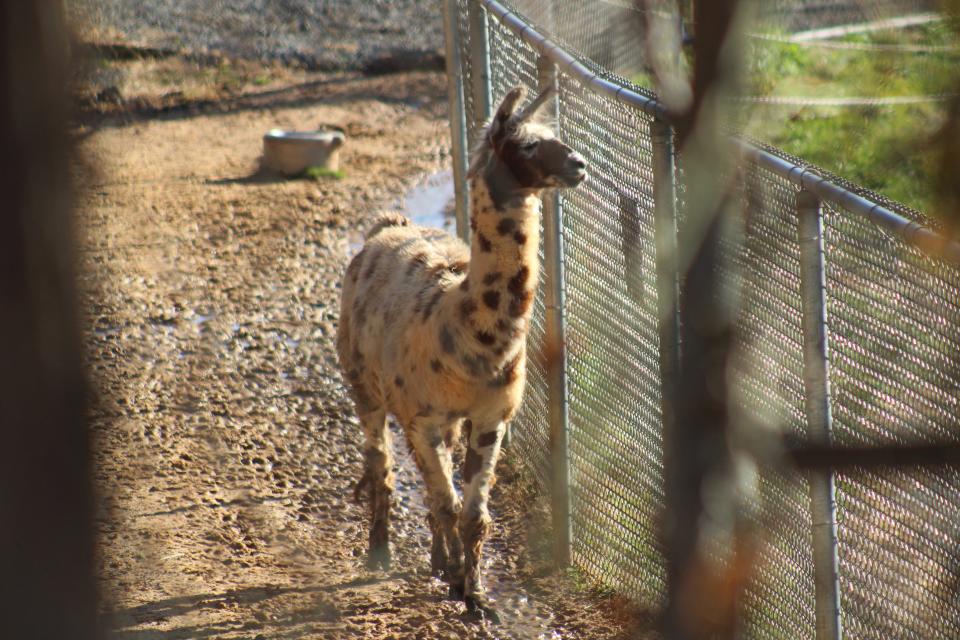
The Humane Society reported similar conditions in 2014
The informant is not the first employee to turn evidence against the zoo. In 2014, the Humane Society of the United States went undercover for 114 days, producing a final report.
The search warrant reads like an echo of the Human Society report. The zoo failed to provide veterinary care and did not provide “uncontaminated food,” water, or proper nutrition. The Human Society found “maggots, algae, and mushrooms” in the enclosures. The zoo did not separate incompatible animals, causing animal fights, injuries, and deaths. The zoo failed to “properly train staff and maintain an adequate number of staff.”
Debbie Leahy, senior strategist of captive wildlife, the Humane Society of the United States told The News Leader that “justice for these animals is long overdue and this pitiful roadside zoo needs to be recognized for what it really is — profit in exchange for the inhumane treatment of animals and a constant public safety risk.”
“The neglect was rampant and impacted animals ranging from giraffes and tiger cubs to primates and guinea pigs,” Leahy said. “There was a great deal of suffering and death from a lack of veterinary care, crowded conditions and reckless practices. Our investigation showed tiger cubs handled by up to 140 people daily, were fed a cheap, nutritionally deficient diet and kept hungry so that the starving cubs could be easily controlled while being bottle-fed by the public. The cubs were never examined by a veterinarian, even when they suffered from chronic diarrhea and a fecal test that revealed they were infected with coccidia and giardia.”
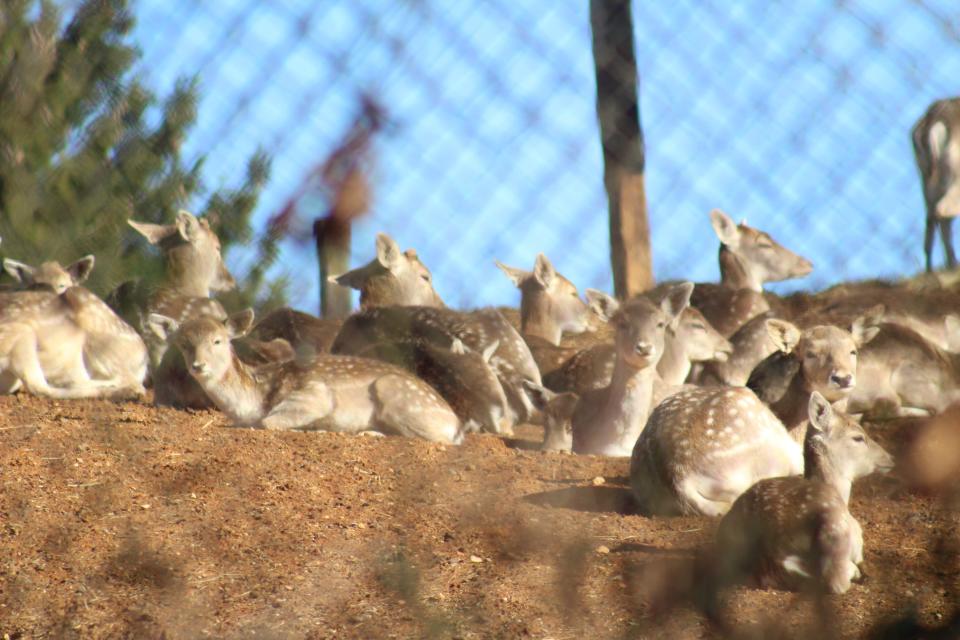
What happened after the raid?
Additional information about the raid and what happened to the animals after is not currently available. Victoria LaCivita, a spokesperson for the office of the attorney general, declined further comment to The News Leader, citing the ongoing nature of the investigation.
However, she did confirm previous statements, including that the park’s tiger had been “humanely” euthanized after the raid with consent of the owners upon recommendation of a veterinarian.
The warrants contain minor updates. During the search, officers entered Karl and Debbie Mogensen’s residence, located inside of the zoo near the “restricted area.”
“During the execution of this search warrant, [officers] discovered bottles of ketamine [a Schedule III controlled substance] and expired gabapentin in the Mogensens' residence. They were not secured under lock and key or with a use log. … These medications are commonly used to treat or sedate animals. Some of these drugs were expired. Some of the bottles are not prescribed to specific animals or have handwritten labels or labels that are missing information. These observed facts justify searching and seizing these drugs to determine what they are, what animal/patient they were prescribed to, and whether they were possessed or prescribed legally.”
As of Monday, that many animals are still on site, including those pictured in this reporting.
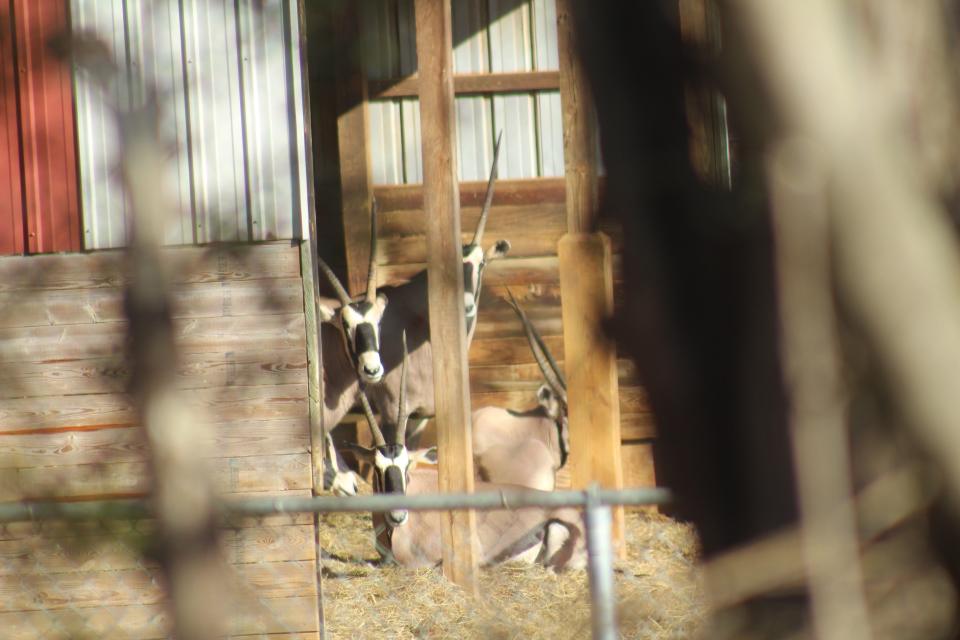
This article originally appeared on Staunton News Leader: Hearing set for Natural Bridge Zoo owners for 'cruel treatment' of nearly 100 animals

